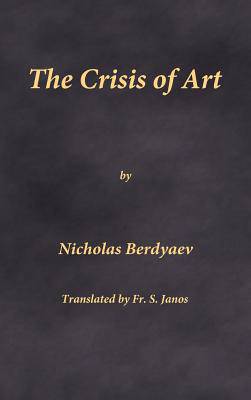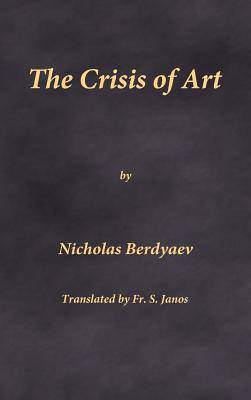
- Afhalen na 1 uur in een winkel met voorraad
- Gratis thuislevering in België vanaf € 30
- Ruim aanbod met 7 miljoen producten
- Afhalen na 1 uur in een winkel met voorraad
- Gratis thuislevering in België vanaf € 30
- Ruim aanbod met 7 miljoen producten
Zoeken
Omschrijving
1st English translation from the Russian: "The Crisis of Art", an insightful booklet of 47 pages by the Russian religious philosopher Nicholas Berdyaev in 1918, originally comprised 3 articles. The present English text has been expanded into 9 related articles written by Berdyaev during this period, arranged into a threefold triadic schema. The 1st triad of articles in the present text are those contained in the original 1918 Russian text. The cover article, "The Crisis of Art", serving also as title to the booklet, examines cultural trends in art, both visual and literary, such as Symbolism, Decadentism, Cubism, Futurism (Filippo Marinetti) with mention of now obscure figures as Chiurlenis. Both "Picasso" visually and A. Bely's 1916 "Peterburg" novel give expression to the disintegrative features of the modern consciousness. The second triad of articles concern the Russian cultural figure, Vyacheslav Ivanov, mentioned in the initial article, concerning the lost aspect of "theurgy" in art, and attempts to recapture this in light of Nietzsche's Dionysianism. A "culture" as such in its dynamic youthful origins developes from within the "cultus", the "religious cult", and later ossifies losing its vitality. But such attempts at recapturing this initial experience typically prove artificial, prove to be mere "affectations of culture", of the genuine "experience", in Berdyaev's critique of Vyach. Ivanov. The third triad of articles further addresses this defect. The article on A. Bely's 1910 novel, "The Silver Dove", is a chilling account of a member of the Russian intelligentsia, intellectually very sophisticated but empty of soul and bearing, becoming involved with a Russian Khlysty-like sect, "the Doves". The second article, written abroad in 1923, addresses A. Bely's reminiscences of the Russian poet Aleksandr Blok (died 1921), and a failure at a "discerning of spirits" among the cultural element. The final Berdyaev article, on the obscure French Catholic figure Léon Bloy (died 1917), is the most engagingly unique in our text. Written in 1914, for nearly a century until 2005, this was the only source written in Russian on L. Bloy, and nigh impossible to find, but a treasure to peruse. Bloy is in ways considered final representative of a decadentist French literary cultural trend, whose names are unfamiliar to most. But L. Bloy is characteristic of no trend, nor would any trend be comfortable having him. Roughly contemporary to Nietzsche, he bears similarities with Nietzsche, but whereas Nietzsche retreated into lofty isolation, L. Bloy took the "low road" into the bourgeois muck of life. He is a man obsessed with the Absolute, with the "existential man", with the unrepeatable unique fate and destiny of each person, concerning which it is only for God to judge. At first impression he provokes and repels, he is an irascible and impossible fellow, an obsessive with uncouth words and mannerisms. But on second thought, as Berdyaev notes, he is typical of the Russian "holy fools" of old, and we come to feel fascination that we have encountered the perspicacity of a seer. He is a man at the extreme, one relying on no tomorrow or the day after, and his obsession at times borders on the demonic, as Berdyaev notes, requiring a "discerning of spirits". His intuition of the "aloneness" of both God and the individual person is unique. Bloy's critique of the "bourgeois" is not the typical socio-political label of ideologues, but a pervasively profound "metaphysics of bourgeoisness". Léon Bloy richly deserves further study as a significant French Catholic personalist and existentialist philosophic figure, which Berdyaev's article invites. The 10th article appended in our text was not penned by Berdyaev; rather, it suggests the threefold triadic structure to our text, symbolically. The present book is part of a continuing series of works of Russian religious philosophy in 1st English translation.
Specificaties
Betrokkenen
- Auteur(s):
- Uitgeverij:
Inhoud
- Aantal bladzijden:
- 152
- Taal:
- Engels
Eigenschappen
- Productcode (EAN):
- 9780996399296
- Verschijningsdatum:
- 13/07/2018
- Uitvoering:
- Hardcover
- Formaat:
- Genaaid
- Afmetingen:
- 152 mm x 229 mm
- Gewicht:
- 371 g

Alleen bij Standaard Boekhandel
+ 107 punten op je klantenkaart van Standaard Boekhandel
Beoordelingen
We publiceren alleen reviews die voldoen aan de voorwaarden voor reviews. Bekijk onze voorwaarden voor reviews.











